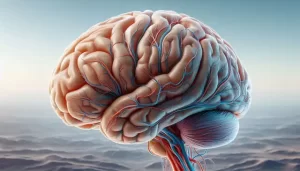Why is CAR-T cell immunotherapy hard to make a breakthrough on lung cancer?
- A Persistent Crisis: The Looming Specter of Drug Shortages in United States
- Rabies: The fatality rate nearly 100% once symptoms appear
- Human Brain Continues to Grow: Study Shows Increase in Size and Complexity
- CRISPR Genome Editing: From Molecular Principles to Therapeutic Applications
- Metformin Helps Immune System Better Recognize Cancer Cells
- Highlights of Prostate Cancer Research at the 2024 EAU Congress
Why is CAR-T cell immunotherapy hard to make a breakthrough on lung cancer?
Why is CAR-T cell immunotherapy hard to make a breakthrough on lung cancer? Even with many difficulties, the researchers’ research in the field of solid tumors has not stopped.
Since the advent of CAR-T cell therapy, research progress at various stages has attracted much attention. As the most popular anti-cancer research field, “everyone” wants to get a share of it, but whether CAR-T can also be applied to lung cancer? Setting off a new wave of lung cancer immunotherapy?
▌Uncover the mystery of CAR-T cell therapy
The earliest clinical application of CAR-T cell therapy was Emily, a 6-year-old girl with acute lymphoblastic leukemia. She had no choice after chemotherapy, bone marrow transplantation, recurrence and other multiple diseases deteriorated. At this time, she received a new experimental therapy: first take white blood cells from the blood, genetically modify them with modified HIV, teach them to recognize and kill tumor cells, and then reinject them into the little girl’s body. A week later, the magical result appeared. The little girl’s bone marrow examination was normal and the cancer cells disappeared. Today, she has survived cancer-free for 9 years.

Emily Whitehea
This miraculous cure case further promoted the research of CAR-T cells. In 2017, the U.S. FDA approved the first immune cell therapy-CAR-T (CTL019, Kymriah) that targets CD19. The new turning point of refractory diseases has opened the prelude to immune cell therapy.
The so-called CAR-T cell therapy is the chimeric antigen receptor T cell immunotherapy. CAR-T is to transform the patient’s immune T cells in vitro through biotechnology to make them recognize the antigens on the surface of tumor cells, and then inject these cells back into the patient’s body to achieve the therapeutic effect of identifying and killing cancer cells.
The CAR-T cell technology is applied to the clinic, including the preparation and reinfusion of CAR-T cells in 5 steps:
- Isolate T cells from the peripheral blood of cancer patients or apheresis mononuclear cells;
- Using genetic engineering to transfer the CAR structure that can specifically recognize tumor cells into T cells;
- In vitro culture, massive expansion of CAR-T cells to the required dose for treatment, generally requires billions to tens of billions, and the required dose is generally calculated per kilogram of body weight;
- The myeloablative treatment before reinfusion is usually chemotherapy. On the one hand, it can eliminate immunosuppressive cells, and on the other hand, it can reduce the tumor load to enhance the efficacy;
- Infusion of CAR-T cells, observation of curative effect and close monitoring of adverse reactions.
CAR-T cells will effectively recognize tumor cells after being reinfused into the patient’s body, be activated and continue to proliferate, forming a sustained lethality, and will also recruit a larger number and more complete types of immune cells through the release of cytokines to synergize Combat.
At present, CAR-T therapy is relatively successful in the study of hematological malignancies. In terms of the efficacy of the approved drug Akirensai, the study shows that 101 adult patients with relapsed/refractory large B-cell lymphoma for 1 year The follow-up result was that the best overall response rate was 82%, and the complete response rate reached 54%; the 2-year follow-up result was: a median follow-up of 27.1 months, 39% of subjects still had sustained remission, of which 37% suffered The subjects continued complete remission.
In the field of lung cancer, CAR-T therapy is difficult to break through.
▌The bottleneck that cannot be bypassed
If the immune drugs represented by PD-1/PD-L1 are the “one leg” in the field of cancer treatment, CAR-T cell immunotherapy is the “other leg” in cancer treatment. If you want to walk on both legs, Even running, these challenges cannot be ignored.
Different from the treatment of hematological malignancies, so far, the success of CAR-T cells in the treatment of solid tumors (such as lung cancer) has been limited. The obstacles currently encountered include:
①targeting/non-tumor toxicity;
②neurotoxicity;
③cytokine release Syndrome (CRS);
④ lack of tumor-specific antigen;
⑤ immunosuppressive tumor microenvironment (TME);
⑥ low-level infiltration of tumor tissue;
⑦ tumor antigen escape;
⑧ off-target effect
01. Lack of tumor-specific antigens and no ideal target
At present, an effective method for CAR-T cells to treat solid tumors is to recognize tumor-specific cell surface antigens. However, the heterogeneity of the biological structure of solid tumors is an important limiting factor. Lung cancer can be divided into non-small cell lung cancer and small cell lung cancer and other types. Non-small cell lung cancer can be divided into adenocarcinoma, squamous carcinoma, etc. Subtypes.
Therefore, target selection plays a key role in the efficacy of lung cancer treatment and patient safety. The most common NSCLC (non-small cell lung cancer)-related antigens used in CAR-T cell therapy in clinical trials include EGFR, mesothelin (MSLN), mucin 1 (MUC1), tyrosine kinase receptor EphA2, human Epidermal growth factor receptor 2 (HER2), anti-carcinoembryonic antigen (CEA), PD-1/PD-L1, etc.
The expression levels of these antigens in different patients are different, and not all cells express the targets targeted by CAR-T therapy. For CAR-T therapy, it is difficult to find a clear target “address” among lung cancer patients.
02, off-target effect
The ideal CAR-T cell target is an antigen that is highly expressed in tumor cells, but not expressed or low expressed in normal tissues.
Off-target effect refers to the damage of normal tissues and organs caused by the recognition of antigens of normal body in the process of CAR-T cells exerting cytotoxicity. To solve the off-target problem, it is necessary to find safer targets while reducing the immune response by reducing the binding capacity of single-chain antibodies. At the same time, inhibitory CAR can be used to regulate the activity of CAR-T cells.
03. Toxic and side effects caused by “manslaughter”
Another adverse reaction caused by the inability to specifically recognize tumor cells is that it will cause some non-tumor toxicity in the human body. This is because many antigens are not tumor-specific. When CAR-T cells are targeted on normal (non-tumor) cells When binding to antigen, it may cause diseases of various organ systems (including lung, blood and gastrointestinal system), and even life-threatening.
04, Cytokine Storm
The most common and serious side effect after CAR-T cell infusion is Cytokine release syndrome (CRS). This is because the chimeric antigen receptor specifically binds to the corresponding tumor-associated antigen, triggering the release of a large number of cytokines, and the expression levels of TNF-α, C-reactive protein, IL-2, IL-6, and IL- are significantly increased. Activate multiple types of immune responses. The main clinical manifestations are high fever, hypertension, dyspnea and even multiple organ failure, which can lead to sudden death in severe cases.
05. Immunosuppression of tumor microenvironment
Lung cancer, as a kind of solid tumor, has a tumor immunosuppressive microenvironment (Tumor microenvironment, TME). TME contains a variety of immunosuppressive cells, such as regulatory T cells, tumor-associated macrophages, etc., and excessive Express TGFβ, IL-10, IL-4 and other immunosuppressive cytokines. This environment will affect the activation of CAR-T cells and inhibit their tumor-killing function. Therefore, overcoming the influence of the tumor microenvironment and enhancing the ability of CAR-T cells to infiltrate tumor tissues is an urgent problem to be solved.
▌Hope for the future
Not long ago, “Nature Reviews Drug Discovery” published an in-depth analysis of the challenges and solutions encountered in the treatment of solid tumors with CAR-T therapy. In summary, the ability to select appropriate targets and chimeric antigen receptors, and to overcome the immunity of the tumor microenvironment are the two directions that CAR-T needs to address in solid tumors.
Even with many difficulties, the researchers’ research in the field of solid tumors has not stopped.
A phase I clinical study showed that 11 patients with advanced non-small cell lung cancer with an EGFR expression of more than 50% were included in the immunohistochemical test, and the anti-EGFR CAR-T cell anti-tumor therapy with a reinfusion dose of 0.97x107cells·kg-1 was included. The results showed that 2 patients achieved partial remission, 5 patients remained stable and 2 patients had a stable period of up to 8 months. None of the 11 patients had any obvious side effects, suggesting that Anti-EGFR CAR-T cells are effective in treating lung cancer. Effectiveness and safety, may have a certain improvement effect on EGFR-resistant lung cancer patients.
In a study published in Oncogenesis on August 13, 2020, researchers from the First Affiliated Hospital of Guangzhou Medical University and Baylor College of Medicine and other institutions constructed CAR-T cells targeting PD-L1, proving PD-L1-CAR-T cells have anti-solid tumor activity in vitro, not only that, non-small cell lung cancer xenograft tumors with high PD-L1 expression in mice also achieved prolonged remission. This discovery provides preclinical evidence to support CAR-T cells targeting PD-L1 to treat non-small cell lung cancer and other solid malignancies.
At the ASCO annual meeting in 2021, the latest research data on CAR-T cell therapy targeting GPC3 (glypican, a potential new target for the treatment of liver cancer) target for hepatocellular carcinoma was published, and it is for GPC3-positive recurrence/refractory For patients with advanced hepatocellular carcinoma, CAR-T cell therapy (Ori-CAR-001) as a follow-up treatment, the disease control rate reached 77.8%, and it showed good safety and efficacy. It may become a new type of treatment for patients with advanced liver cancer. therapy.
Look forward to making breakthroughs in CAR-T cell therapy in the field of lung cancer, which will benefit more patients!
Why is CAR-T cell immunotherapy hard to make a breakthrough on lung cancer?
(source:internet, reference only)
Disclaimer of medicaltrend.org
Important Note: The information provided is for informational purposes only and should not be considered as medical advice.



